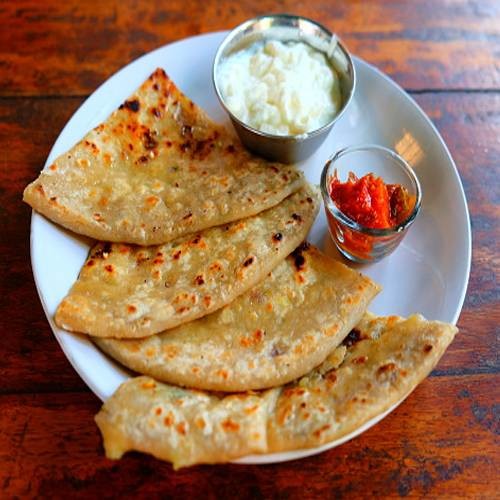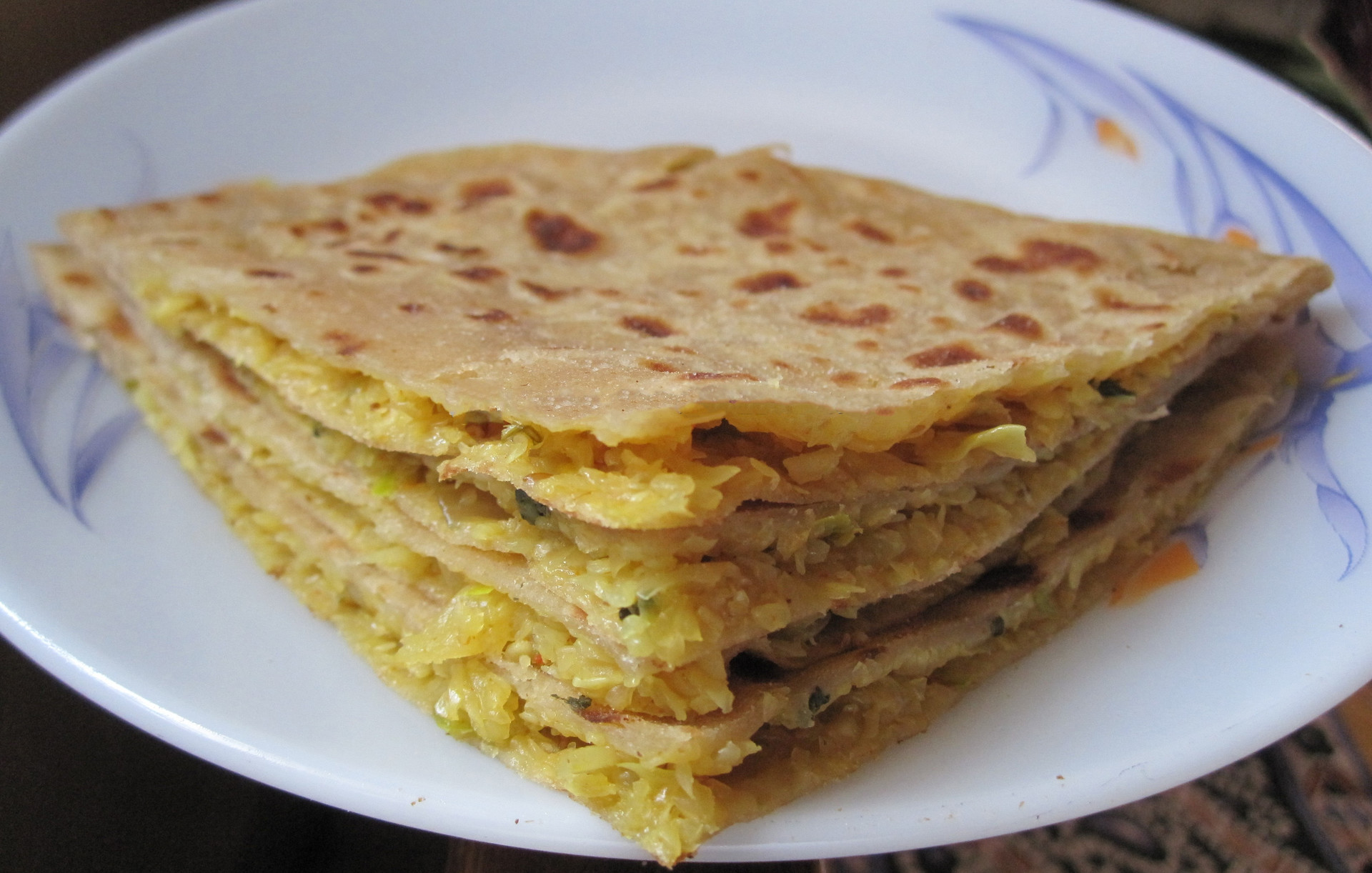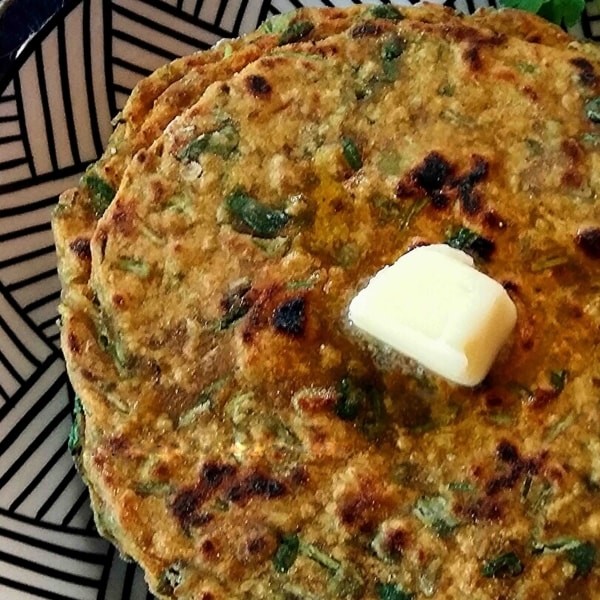The Parathas
Native to : The Indian Subcontinent.

Image Credit : By CIA (edited by User:Deepak) [Public domain or Public domain], via Wikimedia Commons | Indian Subcontinent
The parathas are native to, and still highly common in, the Indian subcontinent. We say "the parathas" because there is not one kind of paratha. The Hindi word paratha originates from the amalgamation of some Sanskrit words, and is now known by slightly different names as well in different Indian (Indo-European/ Indo-Aryan) languages (Parota in Punjabi, for example).
The parathas are, in general, a flatbread, usually with stuffings inside, before it is heated with fat on a hot pan. However, there are quite a few without stuffings, yet their own very different tastes.
It is cooked in a round shaped, however, it may be served as a whole or cut into pieces before being served. Parathas are very popular and yummy! Look below at the kinds to know which one seems your type!
You might want to know that this Wikipedia page lists more than 50 kinds of parathas it seems - https://en.wikipedia.org/wiki/Paratha.
-
Aaloo Paratha
The Hindi word "aaloo" means "potato". It is unianimously the most popular and common form of parathas, and would be named first by 99 people if you asked a 100 (may be I am exaggerating). The stuffing for this paratha ismashed potato with added salt and some herbs and spices for flavor. The dough, is plane and relies on the stuffing for the flavor.

Image credit : TimesFood | Aloo Pratha with plain curd and some pickle.
2. Paneer Paratha
Paneer is known in English as "cottage cheese". It is a brittle cheese which is low in calories but high in protein and other nutrients. It is hence considered as one of the healthiest cheeses in the world. Hence, the stuffing in this paratha is one with mashed cottage cheese.
3. Gobhi Paratha
Gobhi ambiguosuly refers to cauliflower and cabbage in Hindi, but don;t worry - they both have got their own parathas. In Hindi, cauliflower is known as "phool gobhi" (phool = flower) and cabbage is known as "band gobhi" (band = closed). Both of these make great stuffings for parathas. If I had to choose, though, I would go with the one with the Cauliflower and hopefully with some butter melting on top of the hot paratha!

Image Credit : JainRasoi
4. Chana Paratha
Chana stands for chickpea. Usually, chana paratha is made up of black chickpeas. Despite being an Indian, I do not know much about India (not due to ignorance but because of so much to know); but I have never had a chana paratha that is not made stuffed with black chickpea.
5. Makka paratha
Unlike the parathas mentioned above, the Makka (corn) paratha is not made up of wheat dough/flour. It uses corn flour and hence is more brittle and tends to break while cooking. It does taste quite different and in a good way!

Image credit : FitNHungry.com | Makka Paratha with some butter on top of it
6. Methi Paratha
Methi stands for Fenugreek. It is a herb (tastes bitter) which has medicinal properties. Methi Paratha is a non stuffed paratha. However, fenugreek leaves can be added to the stufings of other parathas to make a combination. To make methi paratha, the Fenugreek leaves are mixed with the dough along with salt and other flavors before the dough is shaped into a round flatbread. The taste is quite interesting - salty, and the very slight bitterness of the fenugreek leaves bringing out the other flavors more prominently.
7. Gaajar Paratha
Gajar paratha is also a non-stuffed paratha, wherein grated carrot strings are mixed with the dough, along with salt and other flavors, before cooking.
The other quick mentions in this list that I would like to include are - Chicken Paratha, Dhaniya (coriander) paratha, Lachcha Paratha (an amazing specialty consisting of layers and layers), Lauki Paratha, Mooli (reddish) paratha, Palak (spinach paratha), Tandoori Paratha, and so on!
So don;t wait anymore and dash to your nearest Indian restaurant to try one of these!
Photo gallery
Want to have your own Erasmus blog?
If you are experiencing living abroad, you're an avid traveller or want to promote the city where you live... create your own blog and share your adventures!
I want to create my Erasmus blog! →







Comments (0 comments)